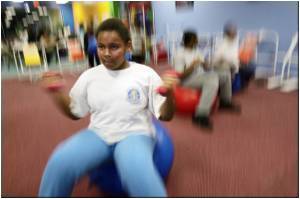Most American youngsters are not meeting the federal recommendation of 60 minutes a day.

The results of various approaches, ranging from mandatory physical education in school to changes in playground designs, were published recently in the American Journal of Preventive Medicine. The study was funded through the Robert Wood Johnson Foundation's Active Living Research program.
"Schools and communities at large can play a major role in helping youngsters stay active and be healthy," said David Bassett, a professor in the UT Department of Kinesiology, Recreation, and Sport Studies and the study's lead author. "This information can help legislators, school officials, and other policy makers make well-informed decisions that can enhance physical activity in youth."
For the study, Bassett and his team reviewed more than 85 past research studies that assessed physical activity in children such as walking or biking to school, increasing physical education time in school or having access to parks using accelerometers, pedometers, heart rate monitors or direct observation. He and colleagues converted the results from each study into a standard measurement of how energy is expended. They then averaged the results to estimate the minutes of moderate to vigorous physical activity for children.
The Physical Activity Guidelines for Americans, issued by the federal government in 2008, recommend that children and adolescents be active for at least 60 minutes every day. The UT study offers these suggestions on how children can perform or combine a variety of physical activities to meet that goal:
- Mandatory daily physical education in school: 23 minutes
- Providing classroom physical activity breaks: 19 minutes
- Walking or biking to school: 16 minutes
- Renovating parks to include more equipment and opportunities for activity: 12 minutes
- After-school physical activity programs: 10 minutes
- Modifying school playgrounds: 6 minutes
- Standardizing physical education curriculum to increase active time and decrease inactive time: 6 minutes more than traditional physical education class
- Modifying recess to provide more play equipment that encourages physical activity: 5 minutes more than traditional recess
Source-Eurekalert
 MEDINDIA
MEDINDIA




 Email
Email




